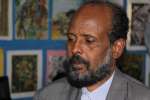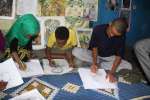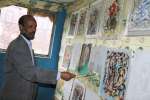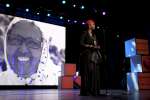More support needed for Somali refugees going back home from Kenya
News Stories, 16 October 2015
GENEVA, Oct 16 (UNHCR) – Nearly 5,000 Somali refugees from Kenya's Dadaab camps have returned home since December 2014 and a further 4,500 have signed up to go back, the UN refugee agency announced today.
UNHCR has helped the returning refugees with transport to their places of origin. Mostly these have been the southern port of Kismayo, the capital Mogadishu, the towns of Baidoa and Luuq in south and central Somalia.
"They also receive a cash grant, food and basic domestic items such as sleeping mats, mosquito nets, a solar lantern, hygiene supplies and kitchen utensils to help them start a new life," UNHCR spokesperson Adrian Edwards told a press briefing in Geneva.
Meanwhile, UNHCR says that more than 26,000 Somali refugees have fled violence in Yemen and returned to Somalia, mostly to Mogadishu.
UNHCR says that although security and socio-economic conditions in many parts of Somalia are not right for large-scale returns and that many refugees remain doubtful about returning, some are eager to leave life in exile behind and help rebuild their country.
"To end one of the world's most complex refugee situations it is vital to make sure that the small number of returns can be successful and contribute to a more peaceful and stable Somalia," Edwards added.
He added that more support and investment in the country's social and economic infrastructure was urgently needed.
"While security remains a concern, the lack of equipped public schools and of job opportunities is cited by many as stopping them from going back," he added.
To rally international support for Somalia, UNHCR and the European Union are organizing a pledging conference on Wednesday 21 October, in Brussels.
UN High Commissioner António Guterres, the EU High Representative for Foreign Affairs and Security Policy Federica Mogherini and the European Commissioner for International Cooperation and Development Neven Mimica will welcome the Somalia's Prime Minister Omar Abdirashid Ali Sharmarke and the Kenyan Cabinet Secretary for Foreign Affairs, Amina Mohammed, together with the high-level delegations from Djibouti, Ethiopia, Kenya, Uganda and Yemen.
They will present a plan of action to prepare for the sustainable returns of Somali refugees from the region to Somalia and to rebuild the areas of return.
The main focus will be on rebuilding the infrastructure, reinforcing law enforcement, education, water and sanitation, health care provision, shelter, agriculture and the creation of job opportunities to representatives of more than 30 donor countries and organizations. The plan requires a total of US$500 million and will run for two years until the end of 2017.
More than 2 million Somalis remain displaced in the region, including over 1.1 million in their own country and 967,000 as refugees in the neighbouring countries. The majority (420,000) are living in Kenya, mostly in the five refugee camps in Dadaab in the north-east of the country. Nearly 250,000 Somali refugees are living in Ethiopia and an estimated 200,000 in Yemen.




































